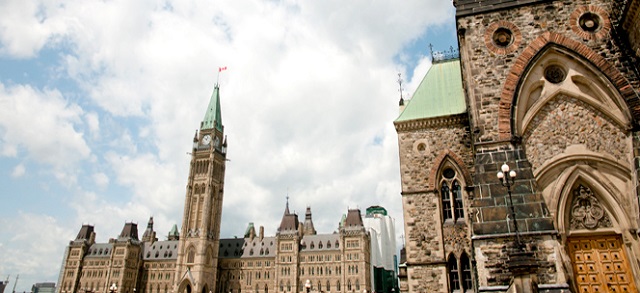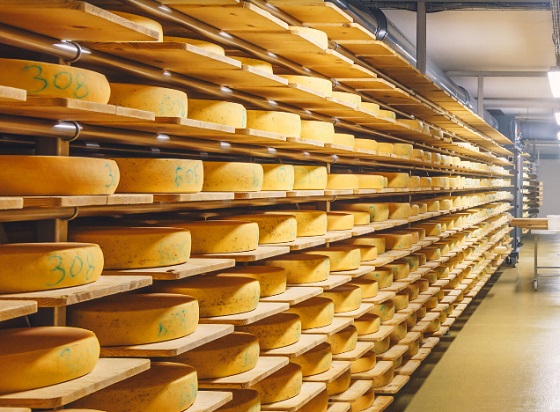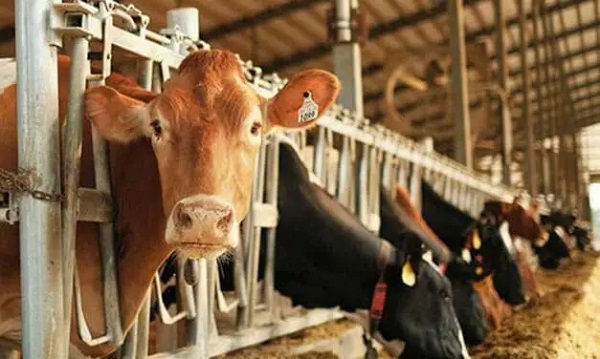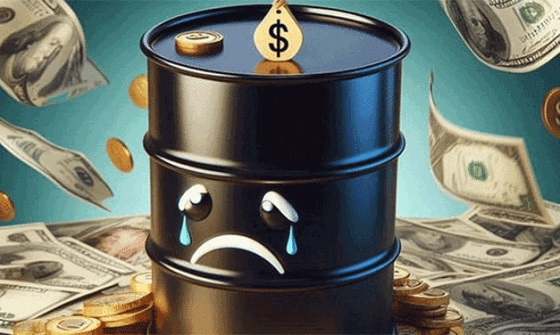Business
Federal bureaucrats spend $76,000 a month renting art taxpayers have already bought

From the Canadian Taxpayers Federation
By Ryan Thorpe
“Can someone in government explain why taxpayers are being sent a bill so bureaucrats can decorate their offices with artwork that taxpayers have already bought and paid for?”
When bureaucrats hang art in their offices, taxpayers are on the hook – twice.
First, the government uses tax dollars to purchase artwork for its Art Bank. Then bureaucrats rent out that artwork and send the bill to taxpayers.
And that art bill comes to millions of dollars.
“Can someone in government explain why taxpayers are being sent a bill so bureaucrats can decorate their offices with artwork that taxpayers have already bought and paid for?” asked Franco Terrazzano, CTF Federal Director. “This is an outrageous waste of money and, to add insult to injury, the government is double billing taxpayers for artwork we’ll never see.”
The Canadian Taxpayers Federation obtained access-to-information records detailing all art rentals made by federal departments and agencies from the Canada Council for the Arts’ Art Bank between January 2016 and July 2024.
During that time, federal departments and agencies racked up $7,808,827 in art rentals.
That means since Prime Minister Justin Trudeau came to power, federal bureaucrats have been spending an average of $76,000 a month renting artwork for their offices.
“Every month, federal bureaucrats spend more money renting art than what the average Canadian earns in an entire year,” Terrazzano said. “It’s amazing that we need to say this, but maybe these bureaucrats could ease up at the taxpayer-funded Art Bank when record numbers of Canadians are lined up at food banks.”
Last year, the average Canadian worker made less than $70,000, according to data from Statistics Canada. In March 2024, Canada saw a record high two million visits to food banks, according to Food Banks Canada.
Federal departments and agencies made 1,445 rentals from the Art Bank between January 2016 and July 2024, according to the records.
The highest single rental came in April 2020, when a federal department or agency expensed $120,240 in artwork to taxpayers.
The records obtained by the CTF do not specify which federal departments or agencies expensed the art rentals.
The Art Bank contains more than 17,000 works of art from more than 3,000 artists, according to the CCA website.
“The Art Bank has the largest collection of contemporary Canadian art anywhere,” according to the CCA. “It houses paintings, sculptures, drawings, photographs and prints by emerging and established artists.”
The CCA is a federal Crown corporation, which dishes out hundreds of millions in grants to artists and arts organizations every year. In 2023-24, CCA grants totalled more than $300 million.
In 2022-23, the CCA received $423 million in federal funding, which accounts for about 90 per cent of the agency’s revenue.
So taxpayers not only foot the bill for this artwork through parliamentary appropriations to the CCA, but also get hit with a secondary expense when that artwork is later rented by a federal department or agency.
In Budget 2023, the government promised to find savings in the Crown corporations.
“The government will also work with federal Crown corporations to ensure they achieve comparable spending reductions, which would account for an estimated $1.3 billion over four years,” according to Budget 2023.
“Bureaucrats billing taxpayers $76,000 a month in art rentals is outrageous at the best of times, but with the government more than $1 trillion in debt and so many Canadians struggling, it’s utterly inexcusable,” Terrazzano said. “The government said it would find savings at Crown corporations, so defunding the Canada Council for the Arts is a perfect place to start.”
Federal departments and agencies expensing art rentals isn’t the only way taxpayers are hit with big bills so government officials can decorate their offices.
In July 2023, the CTF reported 52 Canadian Senators expensed $514,616 in art rentals to taxpayers since 2016.
Alberta
A Christmas wish list for health-care reform

From the Fraser Institute
By Nadeem Esmail and Mackenzie Moir
It’s an exciting time in Canadian health-care policy. But even the slew of new reforms in Alberta only go part of the way to using all the policy tools employed by high performing universal health-care systems.
For 2026, for the sake of Canadian patients, let’s hope Alberta stays the path on changes to how hospitals are paid and allowing some private purchases of health care, and that other provinces start to catch up.
While Alberta’s new reforms were welcome news this year, it’s clear Canada’s health-care system continued to struggle. Canadians were reminded by our annual comparison of health care systems that they pay for one of the developed world’s most expensive universal health-care systems, yet have some of the fewest physicians and hospital beds, while waiting in some of the longest queues.
And speaking of queues, wait times across Canada for non-emergency care reached the second-highest level ever measured at 28.6 weeks from general practitioner referral to actual treatment. That’s more than triple the wait of the early 1990s despite decades of government promises and spending commitments. Other work found that at least 23,746 patients died while waiting for care, and nearly 1.3 million Canadians left our overcrowded emergency rooms without being treated.
At least one province has shown a genuine willingness to do something about these problems.
The Smith government in Alberta announced early in the year that it would move towards paying hospitals per-patient treated as opposed to a fixed annual budget, a policy approach that Quebec has been working on for years. Albertans will also soon be able purchase, at least in a limited way, some diagnostic and surgical services for themselves, which is again already possible in Quebec. Alberta has also gone a step further by allowing physicians to work in both public and private settings.
While controversial in Canada, these approaches simply mirror what is being done in all of the developed world’s top-performing universal health-care systems. Australia, the Netherlands, Germany and Switzerland all pay their hospitals per patient treated, and allow patients the opportunity to purchase care privately if they wish. They all also have better and faster universally accessible health care than Canada’s provinces provide, while spending a little more (Switzerland) or less (Australia, Germany, the Netherlands) than we do.
While these reforms are clearly a step in the right direction, there’s more to be done.
Even if we include Alberta’s reforms, these countries still do some very important things differently.
Critically, all of these countries expect patients to pay a small amount for their universally accessible services. The reasoning is straightforward: we all spend our own money more carefully than we spend someone else’s, and patients will make more informed decisions about when and where it’s best to access the health-care system when they have to pay a little out of pocket.
The evidence around this policy is clear—with appropriate safeguards to protect the very ill and exemptions for lower-income and other vulnerable populations, the demand for outpatient healthcare services falls, reducing delays and freeing up resources for others.
Charging patients even small amounts for care would of course violate the Canada Health Act, but it would also emulate the approach of 100 per cent of the developed world’s top-performing health-care systems. In this case, violating outdated federal policy means better universal health care for Canadians.
These top-performing countries also see the private sector and innovative entrepreneurs as partners in delivering universal health care. A relationship that is far different from the limited individual contracts some provinces have with private clinics and surgical centres to provide care in Canada. In these other countries, even full-service hospitals are operated by private providers. Importantly, partnering with innovative private providers, even hospitals, to deliver universal health care does not violate the Canada Health Act.
So, while Alberta has made strides this past year moving towards the well-established higher performance policy approach followed elsewhere, the Smith government remains at least a couple steps short of truly adopting a more Australian or European approach for health care. And other provinces have yet to even get to where Alberta will soon be.
Let’s hope in 2026 that Alberta keeps moving towards a truly world class universal health-care experience for patients, and that the other provinces catch up.
Business
Warning Canada: China’s Economic Miracle Was Built on Mass Displacement

If you think the CCP will treat foreigners better than its own people, when it extends its power over you, please think again: Dimon Liu’s warning to Canadian Parliament.
Editor’s Note: The Bureau is publishing the following testimony to Canada’s House of Commons committee on International Human Rights from Dimon Liu, a China-born, Washington, D.C.-based democracy advocate who testified in Parliament on December 8, 2025, about the human cost of China’s economic rise. Submitted to The Bureau as an op-ed, Liu’s testimony argues that the Canadian government should tighten scrutiny of high-risk trade and investment, and ensure Canada’s foreign policy does not inadvertently reward coercion. Liu also warns that the Chinese Communist Party could gain leverage over Canadians and treat them as it has done to its own subjugated population—an implied message to Prime Minister Mark Carney, who has pledged to engage China as a strategic partner without making that position clear to Canadians during his election campaign.
OTTAWA — It is an honor to speak before you at the Canadian Parliament.
My testimony will attempt to explain why China’s economic success is built on the backs of the largest number of displaced persons in human history.
It is estimated that these displaced individuals range between 300 to 400 million — it is equivalent to the total population of the United States being uprooted and forced to relocate. These displaced persons are invisible to the world, their sufferings unnoticed, their plights ignored.
In 1978, when economic reform began, China’s GDP was $150 billion USD.
In 2000, when China joined the WTO, it was approximately $1.2 trillion USD.
China’s current GDP is approximately $18 trillion USD.
In 2000 China’s manufacturing output was smaller than Italy’s.
Today it’s larger than America, Europe, Japan, and South Korea combined.
If you have ever wondered how China managed to grow so fast in such a short time, Charles Li, former CEO of the Hong Kong Stock Exchange, has the answers for you.
He listed 4 reasons: 1) cheapest land, 2) cheapest labor, 3) cheapest capital, and 4) disregard of environmental costs.
“The cheapest land” because the CCP government took the land from the farmers at little to no compensation.
“The cheapest labor,” because these farmers, without land to farm, were forced to find work in urban areas at very low wages.
The communist household registration system (hukou 戶口) ties them perpetually to the rural areas. This means they are not legal residents, and cannot receive social benefits that legal urban residents are entitled. They could be evicted at any time.
One well known incident of eviction occurred in November 2017. Cai Qi, now the second most powerful man in China after Xi Jinping, was a municipal official in Beijing. He evicted tens of thousands into Beijing’s harsh winter, with only days, or just moments of notice. Cai Qi made famous a term, “low-end population” (低端人口), and exposed CCP’s contempt of rural migrants it treats as second class citizens.
These displaced migrant workers have one tradition they hold dear — it is to reunite with their families during the Chinese Lunar New Year holiday, making this seasonal migration of 100 to 150 million people a spectacular event. In China’s economic winter of 2025 with waves of bankruptcies and factory closures, the tide of unemployed migrant workers returning home to where there is also no work, and no land to farm, has become a worrisome event.
Historically in the last 2,000 years, social instability has caused the collapse of many ruling regimes in China.
“The cheapest capital” is acquired through predatory banking practices, and through the stock markets, first to rake in the savings of the Chinese people; and later international investments by listing opaque, and state owned enterprises in leading stock markets around the world.
“A disregard of environmental costs” is a hallmark of China’s industrialization. The land is poisoned, so is the water; and China produces one-third of all global greenhouse gases.
Chinese Communist officials often laud their system as superior. The essayist Qin Hui has written that the Chinese communist government enjoys a human rights abuse advantage. This is true. By abusing its own people so brutally, the CCP regime has created an image of success, which will prove to be a mirage.
If you think the CCP will treat foreigners better than its own people, when it extends its power over you, please think again.
The Bureau is a reader-supported publication.
To receive new posts and support my work, consider becoming a free or paid subscriber.
-

 Agriculture1 day ago
Agriculture1 day agoEnd Supply Management—For the Sake of Canadian Consumers
-

 Automotive2 days ago
Automotive2 days agoCanada’s EV gamble is starting to backfire
-

 Alberta1 day ago
Alberta1 day agoAlberta Next Panel calls to reform how Canada works
-

 International8 hours ago
International8 hours agoGeorgia county admits illegally certifying 315k ballots in 2020 presidential election
-

 International8 hours ago
International8 hours agoCommunist China arrests hundreds of Christians just days before Christmas
-

 Environment1 day ago
Environment1 day agoCanada’s river water quality strong overall although some localized issues persist
-

 Alberta8 hours ago
Alberta8 hours agoCalgary’s new city council votes to ban foreign flags at government buildings
-

 Digital ID1 day ago
Digital ID1 day agoCanadian government launches trial version of digital ID for certain licenses, permits











